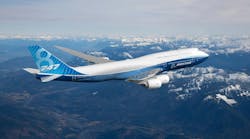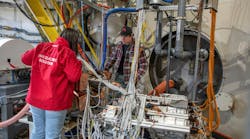Aerospace Colorado Springs in Colorado Springs, Colo., is offering QML Q- and V-quality production versions of the company’s UT200SpWPHY01 SpaceWire Physical Layer Transceiver. The UT200SpWPHY01 Physical Layer Transceiver (the LVDS physical layer for Aeroflex’s SpaceWire Protocol Handler) is designed to handle the critical timing issues associated with the SpaceWire Data/Strobe Encoding scheme. The UT200SpWPHY01 supports data rates as fast as 200 megabits per second with Data/Strobe transmit skew less than 400 picoseconds. The UT200SpWPHY01 has a 3.3-volt power supply and the added benefit of cold spare on LVDS pins. ESD performance of LVDS inputs/outputs is greater than 8000 volts HMB. The UT200SpWPHY01 is designed to withstand 300 kilorads of radiation, picosecond-setting charge particle strikes to 40 MeV-cm2/mg and is SEL immune to greater than 100 MeV-cm2/mg. The UT200SpWPHY01 comes in a 28-pin flatpack (0.14 in.2 ceramic body). SpaceWire is a standard governing serial communication between satellite components. The protocol is self-managing and provides a high-speed, low-power serial interface while offering a simple user interface. The standard supports data rates of 2 megabits per second to 400 megabits per second over 10 meters of cable. Originally developed by the European Space Community (document ECSS-E-50-12A), SpaceWire marries IEEE-1355 with an LVDS physical layer. For more information contact Aeroflex online at www.aeroflex.com/SpaceWire.
Voice your opinion!
Voice your opinion!


